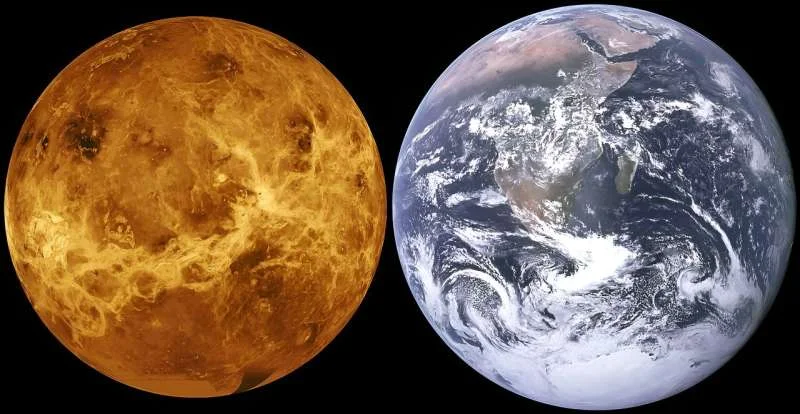Scientists calculated how meteorites fell on Venus. According to physicists’ calculations, meteors in the atmosphere of Venus should be seen earlier than on Earth (flammability is higher in the atmosphere), they should be brighter, fall faster and their visible trails should be shorter.
The researchers published the description and results of the meteor flare formation model, which occurs when meteors enter the Venus atmosphere, in the journal. Icarus. The study was carried out with the support of the Academy of Finland, the Finnish Institute for Geospatial Research and the Priority 2030 development programme.
“Using a physical model of the formation of a meteor glow during the erosion of a meteorite, we show that Venusian meteors are brighter, fall shorter and are found higher in the atmosphere than terrestrial meteors,” said study co-author Apostolos Christou, senior scientist at Armagh Observatory and Planetarium. says that the main reason for such differences is in the atmosphere of Venus, whose density is about 100 times greater than the density of the Earth’s atmosphere.
Scientists explain that as the meteor entered the atmosphere, it collected more and more air in its path. At some point, the meteor body and the hot air plasma surrounding it begin to glow, and the so-called orbit of the glowing meteorite can be seen.
“Other conditions being equal, the glow of meteors on Venus starts higher than on Earth. Due to the increased density of the atmosphere, the vehicle will shine brighter and be subjected to heavy loads. Therefore, the number of meteors observed by the camera orbiting Venus will be higher compared to Earth in the same configuration “It will be 1.5-2.5 times more meteors than the observing Earth satellite,” he explains. Maria Hrytsevich, co-author of the study, associate professor at the University of Helsinki, senior researcher at the Ural Federal University.
Observations can confirm or correct physicists’ calculations. According to scientists, all conditions are present for this; The European Space Agency is preparing the EnVision orbital mission to Venus, where an observation camera could be deployed. As an example, scientists point to the Mini-Euso camera, which has been working on the ISS since 2019 and collecting an impressive amount of data. As physicists explain, it will be easier to capture bolides on Venus from a satellite (due to their earlier entry into the atmosphere) than on Earth. The difficulty lies only in transmitting large amounts of data to Earth, but scientists have a solution to this too.
Scientists add that conventional optical observations using sky recorders or video recorders from the surface of Venus would not be possible. “Venus’ atmosphere is known for its high density and turbidity, which greatly complicates clear optical observation from the planet’s surface. Maria Hrytsevich notes that therefore observations from orbit are again better and simpler. “Instruments orbiting Venus can detect the effects of the dense layers of the atmosphere and clouds. can operate more efficiently by skipping and providing reliable observations of meteors and other atmospheric phenomena.”
Physicists say many factors, including Venus’s relative accessibility compared to other planets in the solar system and its dense atmosphere, make the planet an ideal site for the first studies of extraterrestrial meteors.
“The observations will allow us to estimate the number of meteoroids hitting Venus and bring us closer to understanding the overall picture of the distribution of meteoroids in the Solar System: their speed, orbit, size and composition. This gives a great chance of remote detection of both interstellar and intergalactic meteoroids entering our solar system.” “Such an approach also contributes to an in-depth understanding of the processes of formation and evolution of our solar system, including important aspects of its chemical and physical development,” says Maria Hrytsevich.
Kristu and Hrytsevich hope that one day suitable cameras will be available on the orbiter to see spectacular meteor showers caused by as-yet-unknown streams of comets passing through the orbit of Venus.













